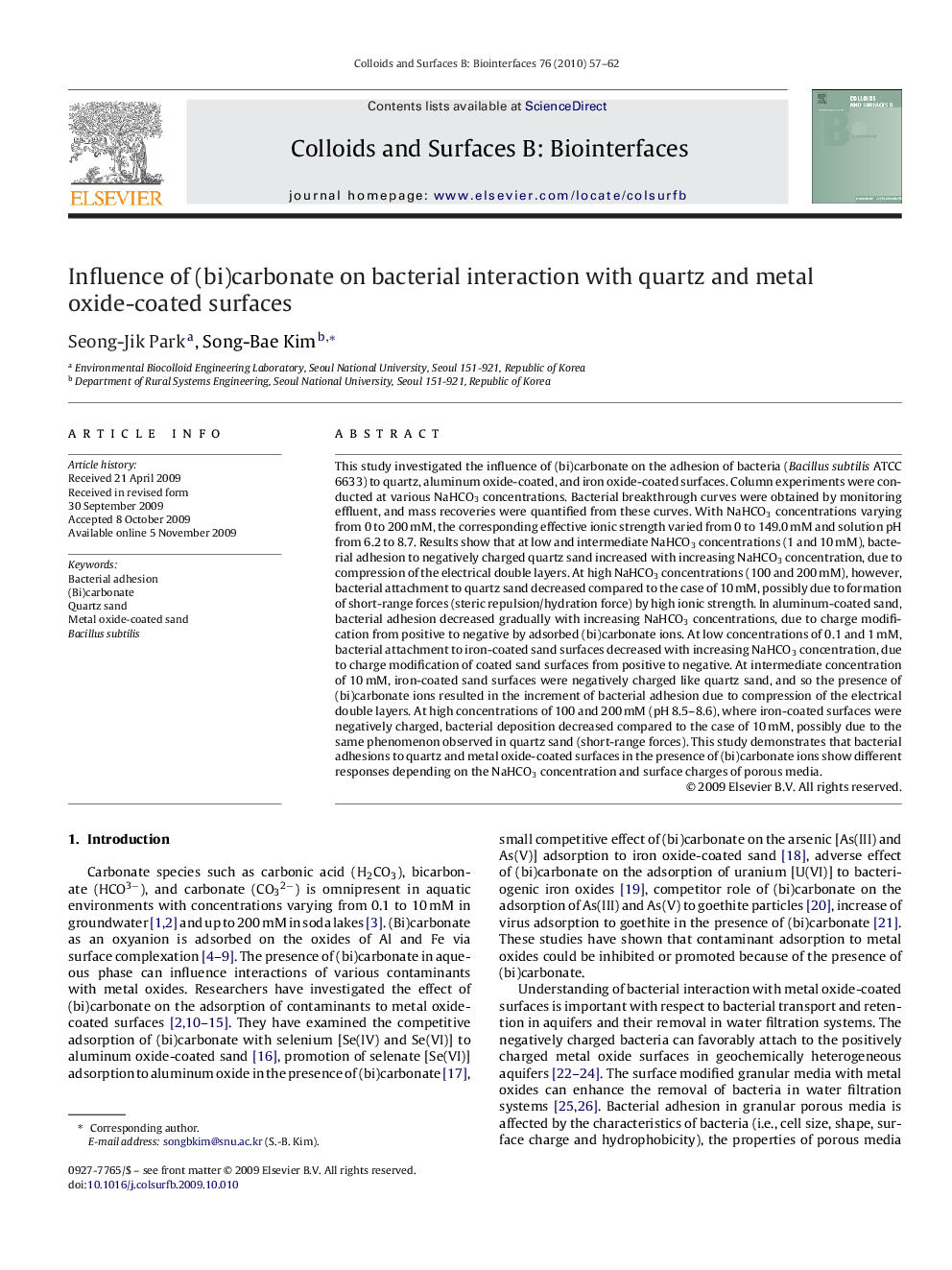| کد مقاله | کد نشریه | سال انتشار | مقاله انگلیسی | نسخه تمام متن |
|---|---|---|---|---|
| 601995 | 879960 | 2010 | 6 صفحه PDF | دانلود رایگان |

This study investigated the influence of (bi)carbonate on the adhesion of bacteria (Bacillus subtilis ATCC 6633) to quartz, aluminum oxide-coated, and iron oxide-coated surfaces. Column experiments were conducted at various NaHCO3 concentrations. Bacterial breakthrough curves were obtained by monitoring effluent, and mass recoveries were quantified from these curves. With NaHCO3 concentrations varying from 0 to 200 mM, the corresponding effective ionic strength varied from 0 to 149.0 mM and solution pH from 6.2 to 8.7. Results show that at low and intermediate NaHCO3 concentrations (1 and 10 mM), bacterial adhesion to negatively charged quartz sand increased with increasing NaHCO3 concentration, due to compression of the electrical double layers. At high NaHCO3 concentrations (100 and 200 mM), however, bacterial attachment to quartz sand decreased compared to the case of 10 mM, possibly due to formation of short-range forces (steric repulsion/hydration force) by high ionic strength. In aluminum-coated sand, bacterial adhesion decreased gradually with increasing NaHCO3 concentrations, due to charge modification from positive to negative by adsorbed (bi)carbonate ions. At low concentrations of 0.1 and 1 mM, bacterial attachment to iron-coated sand surfaces decreased with increasing NaHCO3 concentration, due to charge modification of coated sand surfaces from positive to negative. At intermediate concentration of 10 mM, iron-coated sand surfaces were negatively charged like quartz sand, and so the presence of (bi)carbonate ions resulted in the increment of bacterial adhesion due to compression of the electrical double layers. At high concentrations of 100 and 200 mM (pH 8.5–8.6), where iron-coated surfaces were negatively charged, bacterial deposition decreased compared to the case of 10 mM, possibly due to the same phenomenon observed in quartz sand (short-range forces). This study demonstrates that bacterial adhesions to quartz and metal oxide-coated surfaces in the presence of (bi)carbonate ions show different responses depending on the NaHCO3 concentration and surface charges of porous media.
Journal: Colloids and Surfaces B: Biointerfaces - Volume 76, Issue 1, 1 March 2010, Pages 57–62